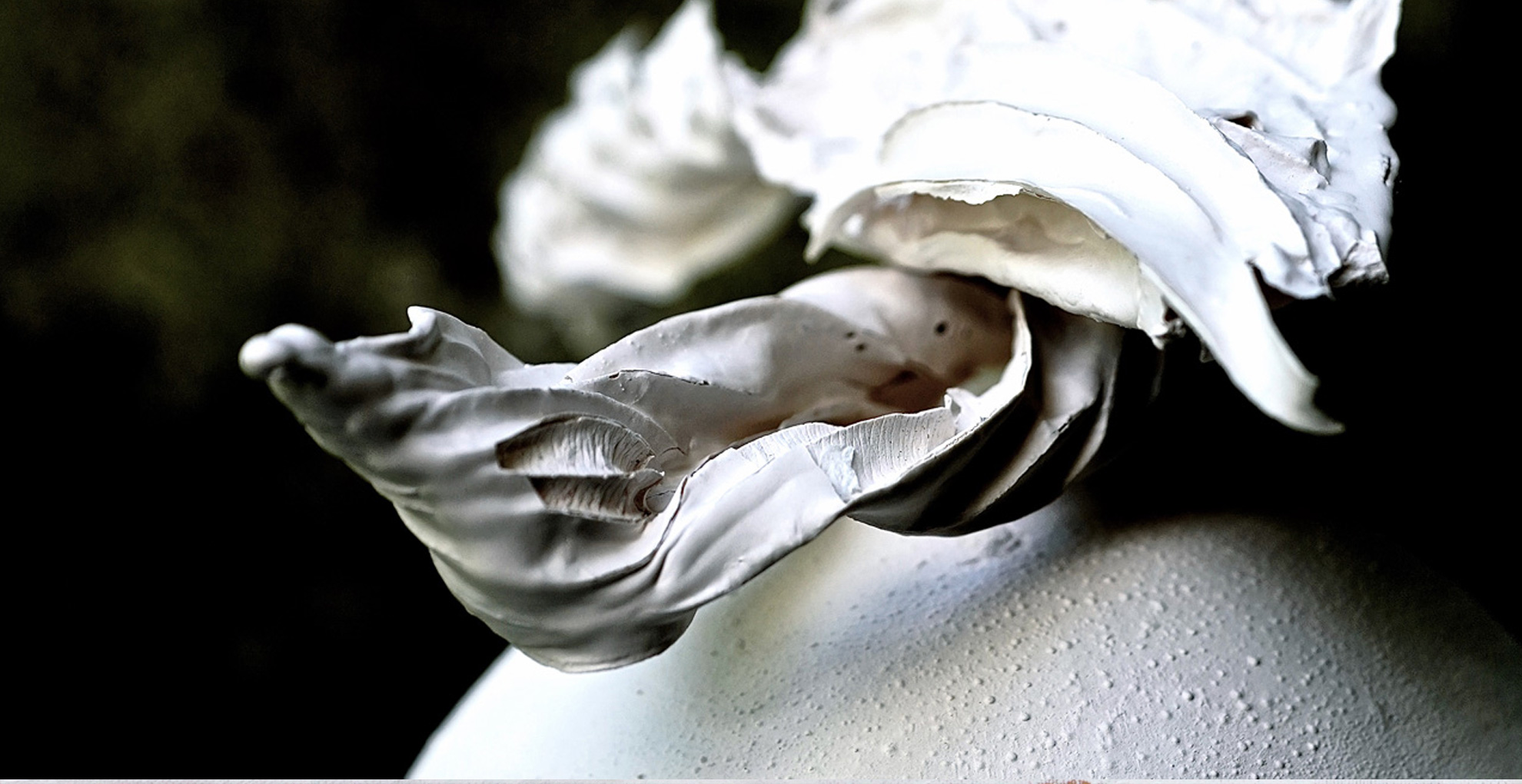clay
By Esther van der Sluis
Story
Transcience of life
A returning theme in her work is the transcience of life. This irreversible characteristic of life is directly converted in nature. The circle of life is visible in every natural element surrounding us. So inspiration can be found in the fragile process of life surrounding us. Leafs and flours perish in a beautiful irreversible way. Van der Sluis has been doing research catching the different stadia of transcience in clay. Real flours, leafs, seed pods are captured in clay. The circle of life is immortalized in clay.
Light
Light is playing a crucial role in Van der Sluis’ artistic work. Whether it’s about oil paint, design or clay, light effects often form my starting point. Playing with shades of light is stunning. Porcelain is a matching material in this case. It has unique characteristics that makes it eminently suitable compared to other ceramic materials. When porcelain is stoked at high temperatures it becomes translucent. This translucent characteristic of porcelain inspired me for developing this light object.
Not only the contrast in light effects but also the contrast between soft shades and shadows and the harsh material and rectangular forms of the design is exciting. The natural characteristics of the material are still visible in de skin of the object. Some parts are translucent, other parts opaque. This occurs because porcelain is a natural material and can’t be forced in every way. To emphasize the natural features of the material, the skin of the porcelain is not glazed but untreated.
Contrasts
Contrasts are always present and typical for her work; fragility versus sturdyness, subtile shapes versus unpolished edges. Brilliance versus humble expressions. Another beautiful contrast can be seen in van der Sluis’ preference to work very thinly and delicately which often results in imperfections and deformations during the extreme temperatures during the stoke. By this the objects obtain a unique character although many never survive the stoke in the kiln.
The historical component also plays a role for Van der Sluis. Like traditional weaving techniques from Peruvians or embroidery from Lapland. Beautiful applications of historical techniques. For example traditional porcelain techniques from the Far East have been a source of inspiration. These have been interpreted in a contemporary way. Incorporated into everyday objects, almost elevated to art. Especially in these times of mass production. Back to slow art..
Her work is often composed of multiple elements. State of the art techniques like 3d-printing are combined with conventional techniques like glazing and hand molding.
Her handwriting is also found in a consequent use of a specific colour scheme. Earthy and sober, recognizable in her own developed glazings like in the series Oxides, which makes her objects even more unique.

Arte Povera
Series inspired by The Arte Povera movement. This was a avant-garde movement has it's roots in Italy in the 1960s. Artists attacked the established institutions and did make new works of art from used poor or cheap materials. It was a way of critisizing the industrialisation and consumer consumption. There are several similarities with our era. In that perspective i also like to make use of ordinary materials like discarded clothes and other used textile fibers.

Translucent lightobject
Contrast is an important aspect of my work. Contrast can appear in different ways. Textures like rough unfinished edges next to shiny glazings. But also in the effects of light and dark. I like to play with the transparent character of porcelain and emphasize it by creating structures in the […]

Fusion: 3d-printing + traditional techniques
Special series of unique porcelain objects. Traditional techniques and <em>state of the art</em> 3d-printing are fused together in these series. A bit ConFusing; the upper part of the object is extremely thin and partly transparant in contrast of the base which is very solid. But also the contrast of ancient traditional almost archaic techniques (con-)fused with hyper modern 3d-printing seems somehow odd




